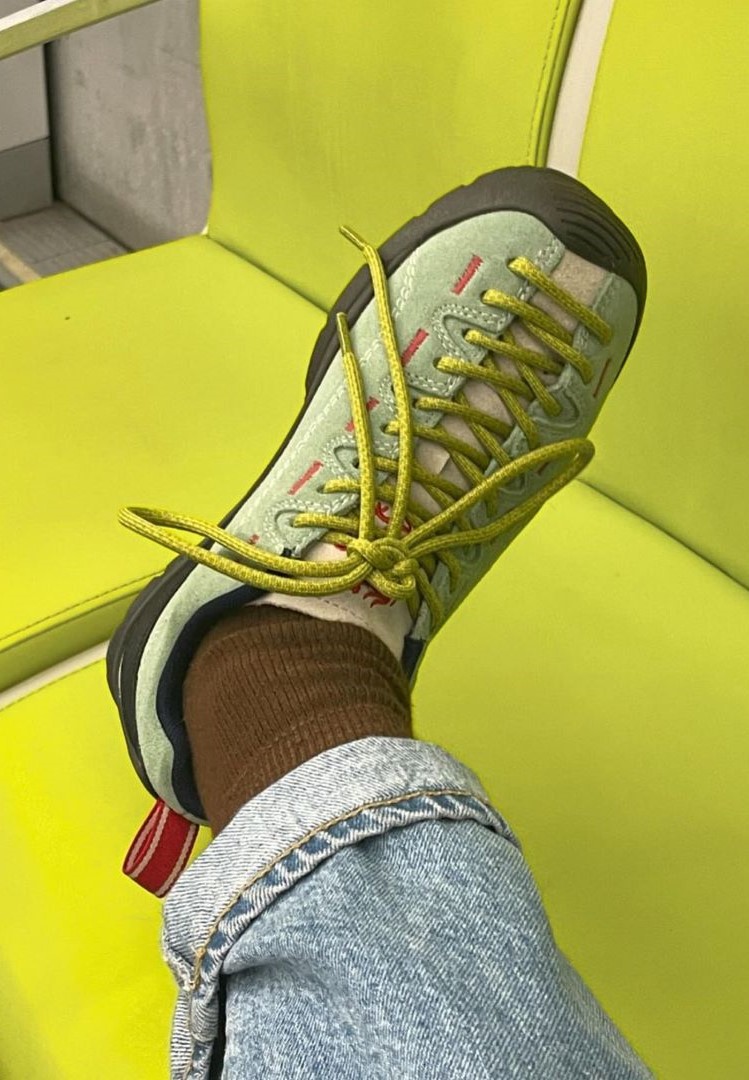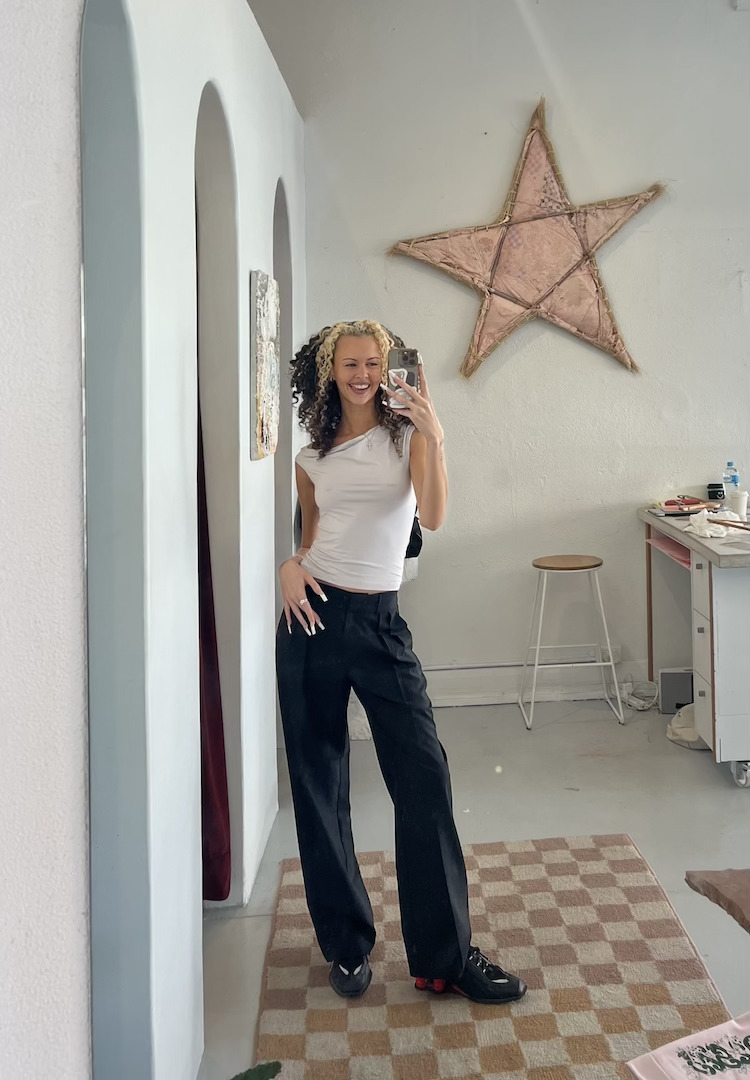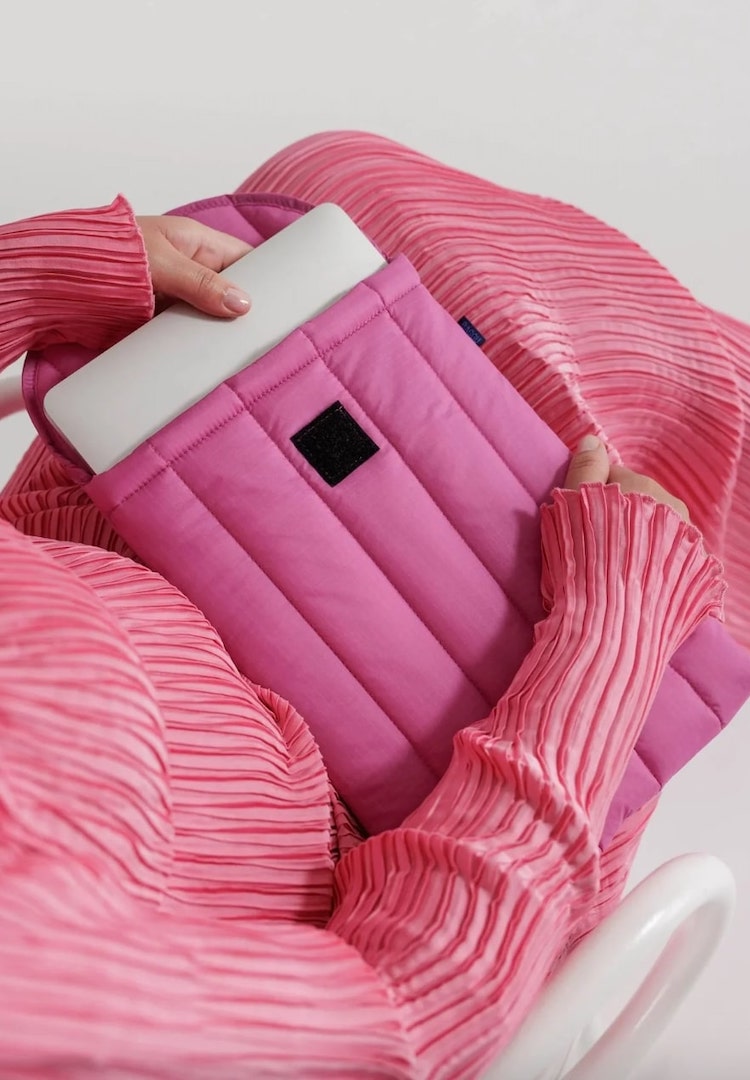Fashion editor and author Lucianne Tonti on her no-sew mending hacks
No sewing in sight.
It’s hard to picture our ancestors whizzing around sewing together closet essentials only a couple of generations back. My mum tells me about the hand-knitted matching sweaters she made for her and my dad when they started dating. She even tells me that growing up, her own mum would hand-sew new winter jackets every year, and her eldest sister used to make her entire suits.
Though it seems these talents have skipped my generation, I’m thankful these sartorial traditional practices haven’t strayed too far geographically. In Victoria, thanks to places like Creative Victoria, there’s a catalogue of talented and crafty fashion people who excel at designing, making and mending clothes.
For more fashion news, shoots, articles and features, head to our Fashion section.
Say, Courtney Holm from A.BCH in Melbourne’s west who offers alterations and customisations on almost everything. Or Emily Nolan from Fitzroy-based womenswear suiting label E Nolan who is renowned for her tailoring abilities.
If you bear gifts of clothes in need of a hem, stitch or some loving every time you visit your mother, know you can work on your fashion-mending abilities without a needle or thread in sight. There are a number of nifty no-sew repairing tricks and handy items that can help extend the quality and life of a garment.
Here, Melbourne-born Lucianne Tonti helps those of us wanting to nurse some of our beloved clothing pieces back to health. As the author of Sundressed, the Fashion Editor of The Saturday Paper and fashion columnist for The Guardian, Lucianne is well-versed in the fashion dilemmas and ailments that periodically affect our wardrobes. Read on to equip yourself with (no-sew, we promise!) mending techniques.
Refresh machines
I try to have two tools on hand to keep my favourite pieces looking fresh. The first is my steamer, I have a Jiffy Esteam Travel Steamer that is so light it comes with me everywhere. It’s perfect for bringing tired, crumpled garments back to life. I also use an electric depilling machine (I have the Phillips Fabric Shaver) to keep knits and woollen coats fresh and smooth.
Hemming tape
Hemming tape is an incredible, easy fix for hems that have been snagged and come loose. You can purchase it from any sewing store or online. Basically, you place it inside the fallen hem and iron over the top of it. It isn’t a permanent fix but it should hold through several washes – enough time for you to take the item to a tailor to have it properly repaired.
Scissors
Scissors are another great tool for fixing an item without getting out a needle and thread. If you’ve stained or torn a sleeve, the bottom of a shirt or dress, or anything really, cut off the affected area and turn a T-shirt into a tank top, a long dress into a mini, jeans into shorts… you get the idea! Remnant scraps can be used to make belts or patches or, at a pinch, for cleaning rags around the house.
Stains
Unfortunately with stains, prevention is much, much better than a cure. If you spill anything on an outfit you should move very quickly to prevent the stain from setting. Start by blotting it with a dry towel, then flush water through the fabric until the stain has lifted, if it has an oil component and you’re wearing polyester or nylon, you’ll need detergent or hand soap to break the bonds.
The only time you shouldn’t do this is if you’re wearing a very special fabric like silk georgette or cream wool tailoring. In this instance just leave the stain alone and take the item straight to your dry-cleaner. If a stain has been set on a garment, so long as the care instructions allow it, soak it in cool water and then run it through a hot wash – this should get most stains out of natural fibres.
Keep up with Creative Victoria here.










